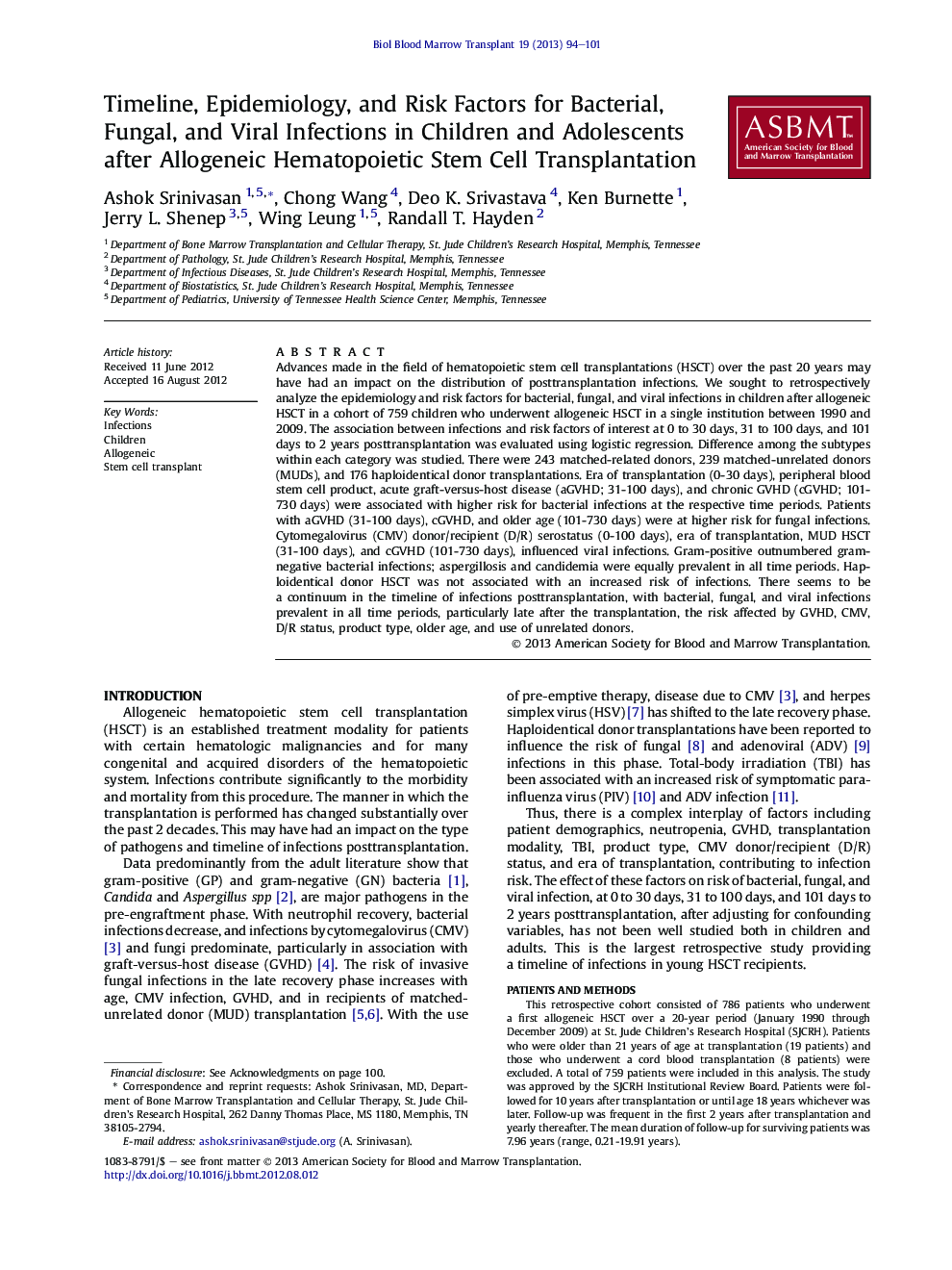| کد مقاله | کد نشریه | سال انتشار | مقاله انگلیسی | نسخه تمام متن |
|---|---|---|---|---|
| 2103221 | 1546298 | 2013 | 8 صفحه PDF | دانلود رایگان |

Advances made in the field of hematopoietic stem cell transplantations (HSCT) over the past 20 years may have had an impact on the distribution of posttransplantation infections. We sought to retrospectively analyze the epidemiology and risk factors for bacterial, fungal, and viral infections in children after allogeneic HSCT in a cohort of 759 children who underwent allogeneic HSCT in a single institution between 1990 and 2009. The association between infections and risk factors of interest at 0 to 30 days, 31 to 100 days, and 101 days to 2 years posttransplantation was evaluated using logistic regression. Difference among the subtypes within each category was studied. There were 243 matched-related donors, 239 matched-unrelated donors (MUDs), and 176 haploidentical donor transplantations. Era of transplantation (0-30 days), peripheral blood stem cell product, acute graft-versus-host disease (aGVHD; 31-100 days), and chronic GVHD (cGVHD; 101-730 days) were associated with higher risk for bacterial infections at the respective time periods. Patients with aGVHD (31-100 days), cGVHD, and older age (101-730 days) were at higher risk for fungal infections. Cytomegalovirus (CMV) donor/recipient (D/R) serostatus (0-100 days), era of transplantation, MUD HSCT (31-100 days), and cGVHD (101-730 days), influenced viral infections. Gram-positive outnumbered gram-negative bacterial infections; aspergillosis and candidemia were equally prevalent in all time periods. Haploidentical donor HSCT was not associated with an increased risk of infections. There seems to be a continuum in the timeline of infections posttransplantation, with bacterial, fungal, and viral infections prevalent in all time periods, particularly late after the transplantation, the risk affected by GVHD, CMV, D/R status, product type, older age, and use of unrelated donors.
Journal: - Volume 19, Issue 1, January 2013, Pages 94–101